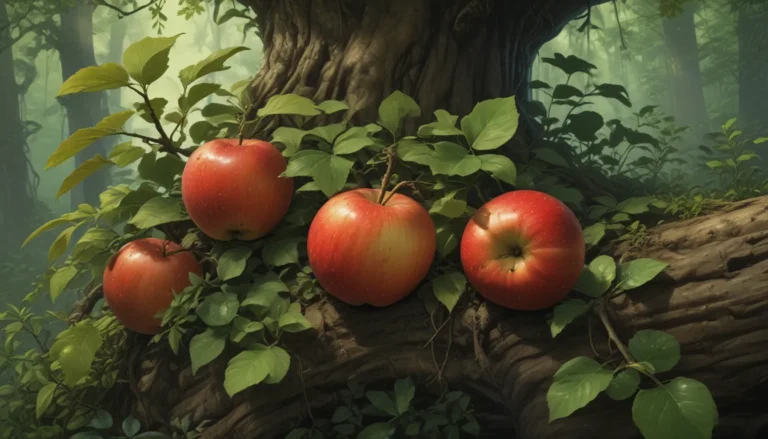The Ultimate Guide to Backyard Birds: How to Attract These Feathered Friends to Your Garden

Who doesn’t love the peaceful sound of birdsong in the garden? For many of us, creating a welcoming environment for our feathered friends is a top priority when planning our landscaping and gardening practices.
Not only do birds bring delightful melodies to our outdoor spaces, but they also add splashes of color and movement that can transform a garden into a vibrant oasis.
Rocky Balboa may have said it best when he described birds as “flying candy.” Well said, indeed.
In this comprehensive guide, we will explore the common backyard birds you’re likely to encounter throughout the year and discuss practical tips for attracting them to your garden. So let’s spread our wings and delve deeper into the world of backyard birds!
Location, Location, Location
Before we dive into the fascinating world of backyard birds, it’s essential to consider your geographic location. The birds you’ll spot in your garden can vary significantly depending on where you are situated.
Whether you’re in the northeast, the southwest, or somewhere in between, your region’s unique characteristics will influence the types of birds you’ll encounter. Mountain ranges, bodies of water, and other geographical features can all impact bird populations in your area.
Having an identification field guide on hand can be incredibly useful for quickly identifying the birds you see. While online resources are readily available, there’s something charming about flipping through the pages of a field guide to spot that elusive bird in your garden.
For a comprehensive guide covering all of North America, the Kaufman Field Guide to Birds of North America is an excellent choice. If you prefer a more region-specific resource, consider browsing locally written guidebooks at your neighborhood bookstore.
National Audubon Society field guides are also highly recommended for their detailed and user-friendly presentation. Whether you’re in the eastern or western region of North America, these guides offer valuable insights into the birds you’ll encounter.
Seed Varieties
When it comes to attracting birds to your garden, providing the right seeds is key. Birds can be picky eaters, so offering a variety of seed mixes tailored to their preferences is essential.
Here’s a breakdown of common seed varieties you might encounter:
-
Sunflower Seeds: Black oil sunflower seeds are a popular choice for many bird species, while striped sunflower seeds have a tougher shell that limits their appeal. Hulled sunflower seeds are convenient but come at a higher cost.
-
Thistle/Nyjer Seeds: Tiny seeds favored by goldfinches, thistle seeds should be heated to prevent invasiveness. Nyjer seeds are a less invasive alternative.
-
Millet: Birds love white millet, but red and golden varieties are often ignored. Opt for white millet for best results.
-
Safflower Seeds: Similar to striped sunflower seeds, safflower seeds are a favorite among cardinals and other species.
-
Milo: A popular choice for ground feeders, but be mindful of attracting unwanted guests like cowbirds.
-
Corn and Peanuts: Use sparingly to avoid rot and wildlife attraction. Feeders should be specifically designed for bird-safe peanuts and corn.
-
Suet: A high-energy food source made from animal fat, suet is a favorite among many bird species.
-
Nectar: Ideal for hummingbirds, nectar is essentially sugar water that can be store-bought or homemade.
In addition to seeds, providing a water source is crucial for attracting birds to your garden. Consider installing a heated bird bath to offer birds a refreshing drink, especially during the winter months.
Migratory Birds, Year-Long Residents, and Stages of Growth
Backyard birds can be categorized into migratory species that visit seasonally, year-round residents that stay put, and transient birds that follow food sources regardless of the season.
For example, Canadian geese migrate to warmer regions during the winter and return home in the spring. Observing these seasonal patterns can offer valuable insights into bird behavior and movement.
Birds can also look different depending on their stage of development and molting. With careful observation, you can spot unique characteristics and changes in familiar species throughout the year.
Familiar Feathers to Look For
Seasonal changes often influence the behavior and appearance of backyard birds. From early departures of species like purple martins and swallows to the arrival of winter visitors like juncoes, there’s always something exciting happening in the bird world.
Keeping an eye out for hummingbirds, orioles, and other summer visitors can provide delightful moments of birdwatching. Providing food sources like nectar and oranges can attract these colorful visitors to your garden.
Whether you’re welcoming year-round guests like bluebirds or observing migratory species like flickers, each bird brings a unique charm to your backyard. By offering specialized food like suet balls and sunflower hearts, you can create a welcoming environment for these feathered friends.
Common Feeder Species in North American Backyards
When it comes to common feeder species in North American backyards, there’s a diverse array of birds that you might encounter. From the bold Blue Jay to the striking Cardinal, each species brings its unique personality and feeding habits.
-
Blue Jay: Known for their vibrant colors and loud calls, Blue Jays are versatile eaters that will enjoy a variety of seeds.
-
Cardinal: With their iconic red plumage, Cardinals can be territorial feeder visitors attracted to safflower seeds and sunflower seeds.
-
Chickadee: Small and friendly, Chickadees are known for their distinct calls and preference for sunflower seeds and suet.
-
Finch: From Goldfinches to House Finches, these colorful birds are attracted to thistle seeds and sunflowers.
-
Grosbeak: The Rose-breasted Grosbeak is a striking bird with a distinctive song, drawn to sunflower seeds and safflower seeds.
-
Mockingbird: Known for their impressive vocal abilities, Mockingbirds can be enticed with suet and fruit.
-
Mourning Dove: These gentle birds are bottomless feeders that enjoy a variety of seeds and grains.
-
Nuthatch: With their unique feeding behavior, Nuthatches are attracted to nuts, sunflower seeds, and suet.
-
Robin: As harbingers of spring, Robins prefer fruits and berries offered on the ground rather than in feeders.
-
Titmouse: These charming birds favor sunflower seeds, suet, and peanuts, making them welcome visitors in woodland areas.
-
Waxwing: Despite their beauty, Waxwings can be challenging to attract and prefer fruits like raisins for feeding.
-
Woodpecker: From Downy to Pileated Woodpeckers, these birds are suet enthusiasts found primarily in wooded areas.
By providing the right food sources and maintaining a welcoming environment, you can create a haven for these feathered guests in your backyard.
Backyard Birds of Prey
While some may view birds of prey as threats to backyard birds, they play a vital role in maintaining the ecosystem’s balance. Species like Cooper’s Hawks, Sharp-shinned Hawks, and Kestrels are powerful hunters that help control bird populations and pests.
Instead of shooing away these magnificent birds, consider appreciating their natural behaviors and contributions to the environment. Watching a bird of prey in action can be a thrilling experience that showcases the beauty and power of nature.
Growing Flowers for Your Feathered Friends
In addition to setting up feeders, planting flowers and plants that birds naturally feed on is a fantastic way to attract backyard birds to your garden. Echinacea, sunflowers, rudbeckia, and asters are excellent choices for creating a bird-friendly environment.
Birds are drawn to dried flower heads bursting with seeds, making them a valuable food source throughout the year. By allowing these plants to stand even after blooming, you can provide birds with a sustainable source of nutrition in your garden.
Keep an Eye Out!
One of the joys of backyard birdwatching is the year-round presence of these feathered visitors. Whether you’re observing sparrows in the winter or robins heralding the arrival of spring, there’s always something to see in your garden.
Maintaining filled feeders, planting bird-friendly flowers, and creating a welcoming environment for birds can enrich your outdoor experience and contribute to the health of your local ecosystem.
So, keep your eyes peeled for feathered guests in your backyard, and enjoy the wonders of birdwatching all year long!
If you found this guide informative and engaging, be sure to explore our other resources for gardening and wildlife enthusiasts. From native wildflower landscapes to attracting purple martins, there’s always something new to discover in the world of backyard birds.
By incorporating additional sections on seed varieties, common feeder species, and growing flowers for birds, this expanded guide offers valuable insights and practical tips for attracting backyard birds to your garden. With a conversational tone and informative content, readers can explore the fascinating world of birdwatching with confidence and enthusiasm.





